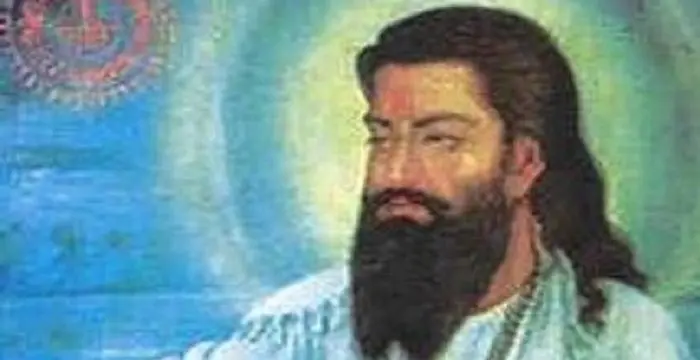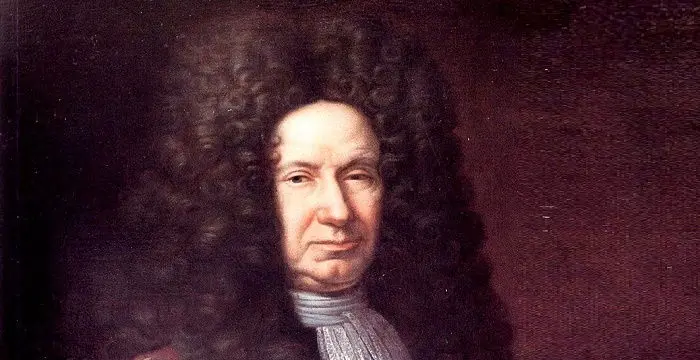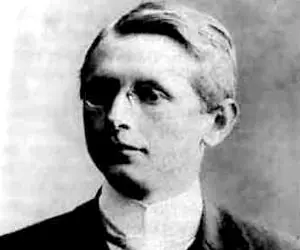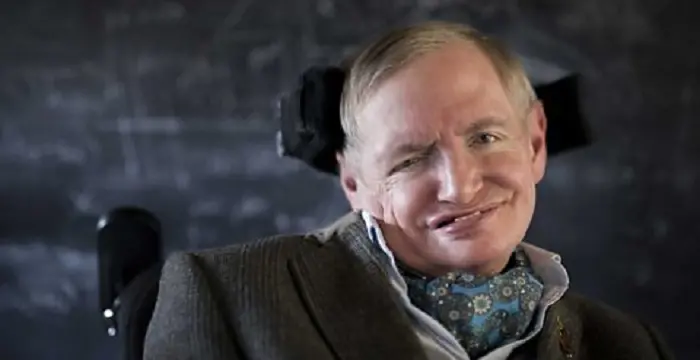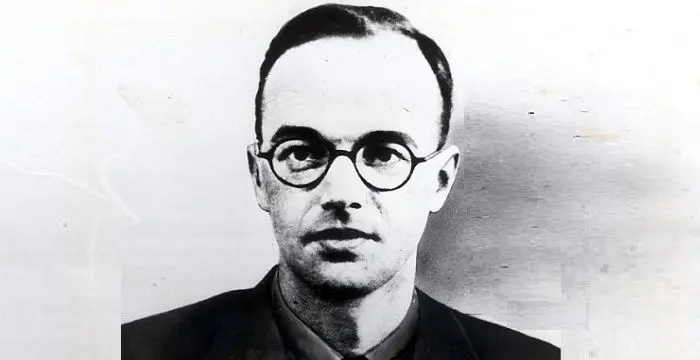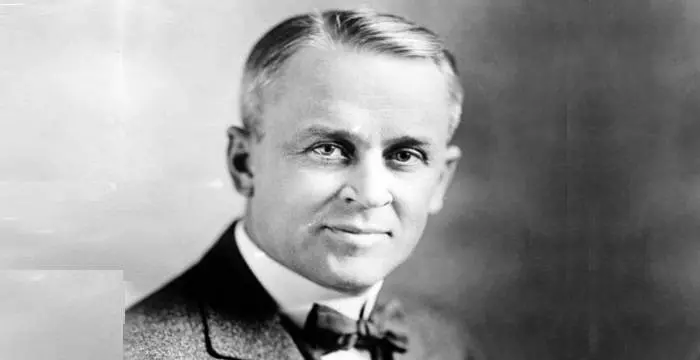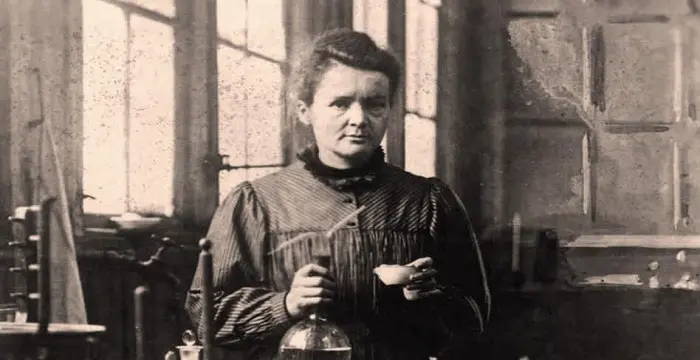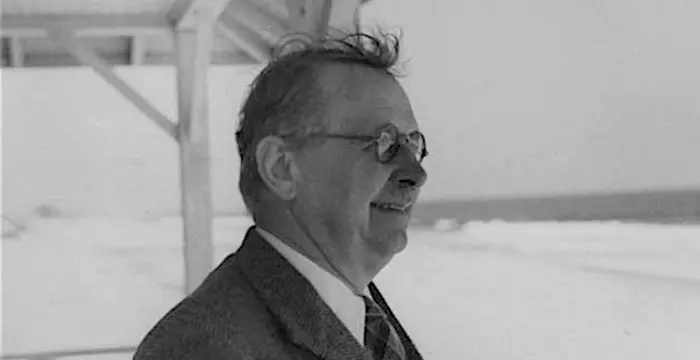
Hermann Klaus Hugo Weyl - Mathematicians, Career and Facts
Hermann Klaus Hugo Weyl's Personal Details
Hermann K
| Information | Detail |
|---|---|
| Birthday | November 9, 1885 |
| Died on | December 8, 1955 |
| Nationality | German |
| Famous | Scientists, Mathematicians, Physicists, Mathematicians, Theoretical Physicist |
| Spouses | Ellen |
| Universities |
|
| Birth Place | Elmshorn |
| Gender | Male |
| Father | Ludwig Weyl |
| Mother | Anna Dieck |
| Sun Sign | Scorpio |
| Born in | Elmshorn |
| Famous as | Mathematician and Theoretical Physicist |
| Died at Age | 70 |
// Famous Mathematicians
Brahmagupta
Brahmagupta was a highly accomplished ancient Indian astronomer and mathematician. This biography of Brahmagupta provides detailed information about his childhood, life, achievements, works & timeline.
Giovanni Domenico Cassini
Giovanni Cassini was a 17th century Italian mathematician, astronomer and astrologer. This biography of Giovanni Cassini provides detailed information about his childhood, life, achievements, works & timeline.
Pythagoras
Pythagoras of Samos was a Greek mathematician and philosopher. Read on to learn more about Pythagoras’s profile, childhood, life and timeline.
Hermann Klaus Hugo Weyl's photo
Who is Hermann Klaus Hugo Weyl?
Hermann Klaus Hugo Weyl, better known as Hermann Weyl, was one of the most famous and skilled mathematicians of the 20th century. He was also popular as a philosopher and acclaimed for his contribution to theoretical physics, having published several works on space, time, matter, philosophy, and logic. His work is famous because it served as a link between pure mathematics and theoretical physics, and it immensely added to quantum mechanics and the theory of relativity too. His works also revealed his interest in philosophy and expressed his findings on relativity. It was he who first produced the unified field theory for Maxwell’s equations of electromagnetic fields and the gravitational field. He is also credited to have found out that by simply using group theory, most of the regularities of quantum phenomena on the atomic level can be easily understood. He was a colleague of Albert Einstein, who at that time was working on finding the details of the theory of general relativity. With Einstein’s influence, Weyl became the first person to have thought of merging general relativity with the laws of electromagnetism.
// Famous Theoretical Physicist
Stephen Hawking
Stephen Hawking was an English theoretical physicist, cosmologist and author. This biography offers detailed information about his childhood, career, life, achievements, trivia and timeline.
Abdus Salam
Abdus Salam was a renowned scientist who belonged to Pakistan. Salam was the first and only recipient of the ‘Nobel Prize’ from his country. This biography provides detailed information about her childhood, life, achievements, works & timeline.
Klaus Fuchs
Emil Julius Klaus Fuchs was a German theoretical physicist and an atomic spy who provided valuable information to the Soviet Union. This biography profiles his childhood, life, career, achievements and timeline.
Childhood & Early Life
Hermann Weyl was born on 9 November 1885 in a small town near Hamburg, Germany, named Elmshorn. However, not much is known about his parents or his childhood.
He studied Mathematics and Physics in both Gottingen and Munich from 1904 to 1908. He completed his Ph.D. in the University of Gottingen, under the supervision of David Hilbert, one of the most influential as well as universal mathematicians of the 19th and 20th centuries. Weyl was a big admirer of him.
Career
After receiving his Ph. D. he held a teaching post in the same university, as a privatdozent, till the year 1913. Then he moved to Zürich Technische Hochschule where he occupied the chair of mathematics from 1913 to 1930.
It was in Zurich that he met Albert Einstein as a colleague, and worked together on various subjects of their interest. Other than Einstein, he was also influenced by Erwin Schrodinger, a Nobel-Prize winning theoretical physicist.
He was offered a faculty position in 1930, in the Institute for Advanced Study in Princeton, New Jersey, but he declined the offer as he didn’t wish to leave his homeland. But he had a Jewish wife, and when the political situation in Germany got worse, he changed his mind and accepted the position in the university and remained there till his retirement in 1951.
Contributions To Mathematics
Hermann Weyl published ‘On the asymptotic distribution of eigenvalues’ in the year 1911, where he proved that it is according to the Weyl law, that the eigenvalues of the Laplacian in the compact domain are distributed. He also formulated his own Weyl conjecture.
By using matrix representation, he also evolved a general theory of continuous groups and found out that just by using group theory, we could find out most of the regularities of the quantum phenomena on the atomic level. His findings were published in ‘Group Theory and Quantum Mechanics’ in the year 1928, where he helped mold modern quantum theory.
He worked on and developed the theory of compact groups from 1923 to 1938, in terms of matrix representations. He also proved a fundamental character formula in the compact Lie group case.
In 1939, he wrote and published a mathematics book, ‘The Classical Groups: Their Invariants and Representation’. It not only described classical invariant theory, but is also considered hugely responsible for the revival of interest in it.
Hermann Weyl published ‘In the Continuum’ where the developed the logic of the predictive analysis using the lower levels of the ramified theory of types, which was initially formed by Bertrand Russell. Not only he developed most of classical calculus, but he did so without using the axiom of choice or the proof by contradiction.
He also attempted a unified field theory in order to unite electromagnetism and gravitation, and he introduced the concept of gauge invariance for it. It describes how some quantities never change though they go through a transformation in the underlying field. His theory was later applied in a modified form to quantum field theory.
After publishing ‘The Continuum Weyl’ he focused on intuitionism as propounded by E. J. Brouwer. Since in ‘The Continuum’ the constructible points exist only as discrete entities, Weyl wanted a continuum that was not an aggregate of points.
Major Works
Hermann Weyl’s first book was ‘On the asymptotic distribution of eigenvalues’ which he published in 1911. It was in this book that he had proved that it is according to the Weyl law, that the eigenvalues of the Laplacian in the compact domain are distributed.
‘Weyl quantization’ (1927) was another one of his major works which showed the existing connection between classical and quantum physics.
’The Classical Groups: Their Invariants and Representations’ (1939) was one of his best known works. David Hilbert’s solution to its main problems in the 1890s had almost killed off the interest in invariant theory but this book helped in reviving it. It discusses various ideas like Felix Klien’s Erlangen program in geometry, as well as studies subjects like the group ring of a finite group and how it decomposes into a sum of matrix algebras. Weyl’s character formula for the characters of representations of the classical groups is also described.
Personal Life & Legacy
Hermann Weyl had met Erwin Shcrodinger in 1921, who at that time was working as a professor in the University of Zurich. Though the two were close friends, Weyl had a love affair with Shcrodinger’s wife Annemarie Schrödinger for some time.
Weyl’s first wife was Friederike Bertha Helene Joseph, who was better known as Helene or Hella. She was the daughter of Dr. Bruno Jospeph, a physician. Helene herself was a philosopher, and a translator of Spanish literature into German and English. They got married in September 1913.
Hermann and Helene had two sons. The first one, Fritz Joachim Weyl was born in February 1915 and the second one, Michael Weyl, was born in September 1917.
In 1948, Helene passed away on the 5th of September. After two years, Hermann Weyl married Ellen Bar, who was the widow of Professor Josef Bar.
After his retirement, he lived with Ellen in Princeton and Zurich. On December 8, 1955, while they were in Zurich, he suffered from a heart attack, which eventually led to his death. He was cremated four days later.
// Famous Scientists
Juliane Koepcke
Juliane Koepcke is a German-Peruvian biologist, who was the lone survivor among the 92 passengers and crew of the ill-fated LANSA Flight 508 that crashed in the Peruvian rainforest on 24 December 1971. Know more about her life in this biography.
Henry Cavendish
Henry Cavendish was a theoretical chemist and physicist, renowned for discovery of hydrogen and calculation of the mass of earth. To know more about his childhood, profile, timeline and career read on
Konstantin Tsiolkovsky
Konstantin Tsiolkovsky was a Russian rocket scientist and a pioneer of astronautics. This biography provides detailed information about his childhood, family, personal life, career, achievements, etc.
Hermann Klaus Hugo Weyl biography timelines
- // 9th Nov 1885Hermann Weyl was born on 9 November 1885 in a small town near Hamburg, Germany, named Elmshorn. However, not much is known about his parents or his childhood.
- // 1904 To 1908He studied Mathematics and Physics in both Gottingen and Munich from 1904 to 1908. He completed his Ph.D. in the University of Gottingen, under the supervision of David Hilbert, one of the most influential as well as universal mathematicians of the 19th and 20th centuries. Weyl was a big admirer of him.
- // 1911Hermann Weyl published ‘On the asymptotic distribution of eigenvalues’ in the year 1911, where he proved that it is according to the Weyl law, that the eigenvalues of the Laplacian in the compact domain are distributed. He also formulated his own Weyl conjecture.
- // 1913 To 1930After receiving his Ph. D. he held a teaching post in the same university, as a privatdozent, till the year 1913. Then he moved to Zürich Technische Hochschule where he occupied the chair of mathematics from 1913 to 1930.
- // 1913Weyl’s first wife was Friederike Bertha Helene Joseph, who was better known as Helene or Hella. She was the daughter of Dr. Bruno Jospeph, a physician. Helene herself was a philosopher, and a translator of Spanish literature into German and English. They got married in September 1913.
- // 1915Hermann and Helene had two sons. The first one, Fritz Joachim Weyl was born in February 1915 and the second one, Michael Weyl, was born in September 1917.
- // 1921Hermann Weyl had met Erwin Shcrodinger in 1921, who at that time was working as a professor in the University of Zurich. Though the two were close friends, Weyl had a love affair with Shcrodinger’s wife Annemarie Schrödinger for some time.
- // 1923 To 1938He worked on and developed the theory of compact groups from 1923 to 1938, in terms of matrix representations. He also proved a fundamental character formula in the compact Lie group case.
- // 1927‘Weyl quantization’ (1927) was another one of his major works which showed the existing connection between classical and quantum physics.
- // 1930He was offered a faculty position in 1930, in the Institute for Advanced Study in Princeton, New Jersey, but he declined the offer as he didn’t wish to leave his homeland. But he had a Jewish wife, and when the political situation in Germany got worse, he changed his mind and accepted the position in the university and remained there till his retirement in 1951.
- // 1939In 1939, he wrote and published a mathematics book, ‘The Classical Groups: Their Invariants and Representation’. It not only described classical invariant theory, but is also considered hugely responsible for the revival of interest in it.
- // 1939’The Classical Groups: Their Invariants and Representations’ (1939) was one of his best known works. David Hilbert’s solution to its main problems in the 1890s had almost killed off the interest in invariant theory but this book helped in reviving it. It discusses various ideas like Felix Klien’s Erlangen program in geometry, as well as studies subjects like the group ring of a finite group and how it decomposes into a sum of matrix algebras. Weyl’s character formula for the characters of representations of the classical groups is also described.
- // 1948In 1948, Helene passed away on the 5th of September. After two years, Hermann Weyl married Ellen Bar, who was the widow of Professor Josef Bar.
- // 8th Dec 1955After his retirement, he lived with Ellen in Princeton and Zurich. On December 8, 1955, while they were in Zurich, he suffered from a heart attack, which eventually led to his death. He was cremated four days later.
// Famous Physicists
Henry Cavendish
Henry Cavendish was a theoretical chemist and physicist, renowned for discovery of hydrogen and calculation of the mass of earth. To know more about his childhood, profile, timeline and career read on
Walter Kohn
Nobel Laureate Walter Kohn was an Austrian-born American theoretical chemist and physicist. Check out this biography to know about his childhood, life, achievements, works & timeline.
Nikola Tesla
Nikola Tesla was a Serbian-American inventor, best known for his development of alternating current electrical systems. This biography of Nikola Tesla provides detailed information about his childhood, life, achievements, works & timeline.
Robert Andrews Millikan
Robert Andrews Millikan was an eminent American experimental physicist who won the Nobel Prize for Physics in 1923 for his work on photoelectric effect. Check out this biography to know about his childhood, life, achievements, works & timeline.
Isaac Newton
Isaac Newton was an English scientist and mathematician, who discovered gravitation and Newtonian Mechanics. Read this biography to find more on his life.
Marie Curie
Marie Curie was a Physicist and Chemist, who was world renowned for her work on radioactivity. She also was the winner of two Nobel Prize. Read this biography to get info about her life and profile.
Hermann Klaus Hugo Weyl's FAQ
What is Hermann Klaus Hugo Weyl birthday?
Hermann Klaus Hugo Weyl was born at 1885-11-09
When was Hermann Klaus Hugo Weyl died?
Hermann Klaus Hugo Weyl was died at 1955-12-08
Where was Hermann Klaus Hugo Weyl died?
Hermann Klaus Hugo Weyl was died in Zürich
Which age was Hermann Klaus Hugo Weyl died?
Hermann Klaus Hugo Weyl was died at age 70
Where is Hermann Klaus Hugo Weyl's birth place?
Hermann Klaus Hugo Weyl was born in Elmshorn
What is Hermann Klaus Hugo Weyl nationalities?
Hermann Klaus Hugo Weyl's nationalities is German
Who is Hermann Klaus Hugo Weyl spouses?
Hermann Klaus Hugo Weyl's spouses is Ellen
What was Hermann Klaus Hugo Weyl universities?
Hermann Klaus Hugo Weyl studied at Georg-August University of Göttingen
Who is Hermann Klaus Hugo Weyl's father?
Hermann Klaus Hugo Weyl's father is Ludwig Weyl
Who is Hermann Klaus Hugo Weyl's mother?
Hermann Klaus Hugo Weyl's mother is Anna Dieck
What is Hermann Klaus Hugo Weyl's sun sign?
Hermann Klaus Hugo Weyl is Scorpio
How famous is Hermann Klaus Hugo Weyl?
Hermann Klaus Hugo Weyl is famouse as Mathematician and Theoretical Physicist
